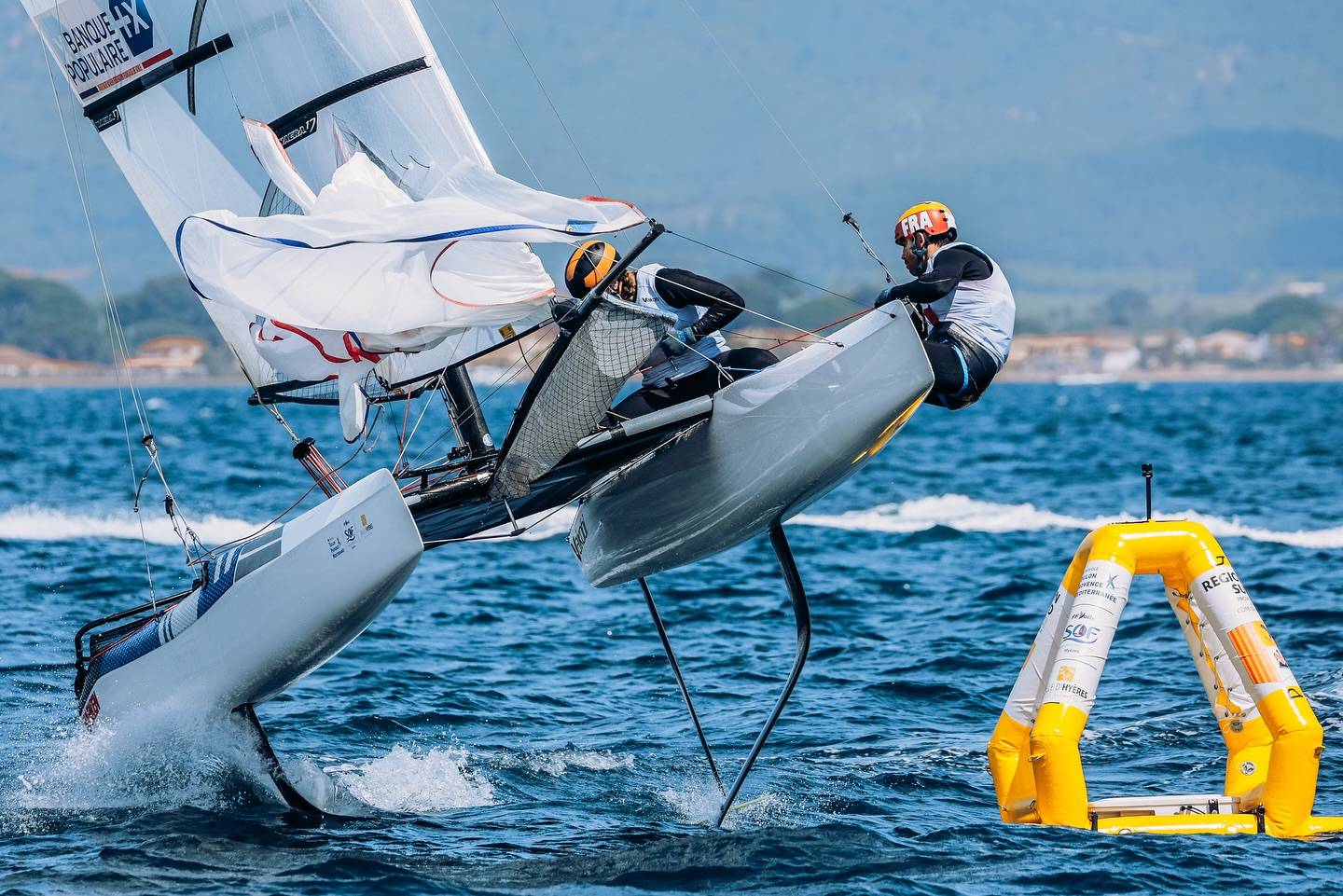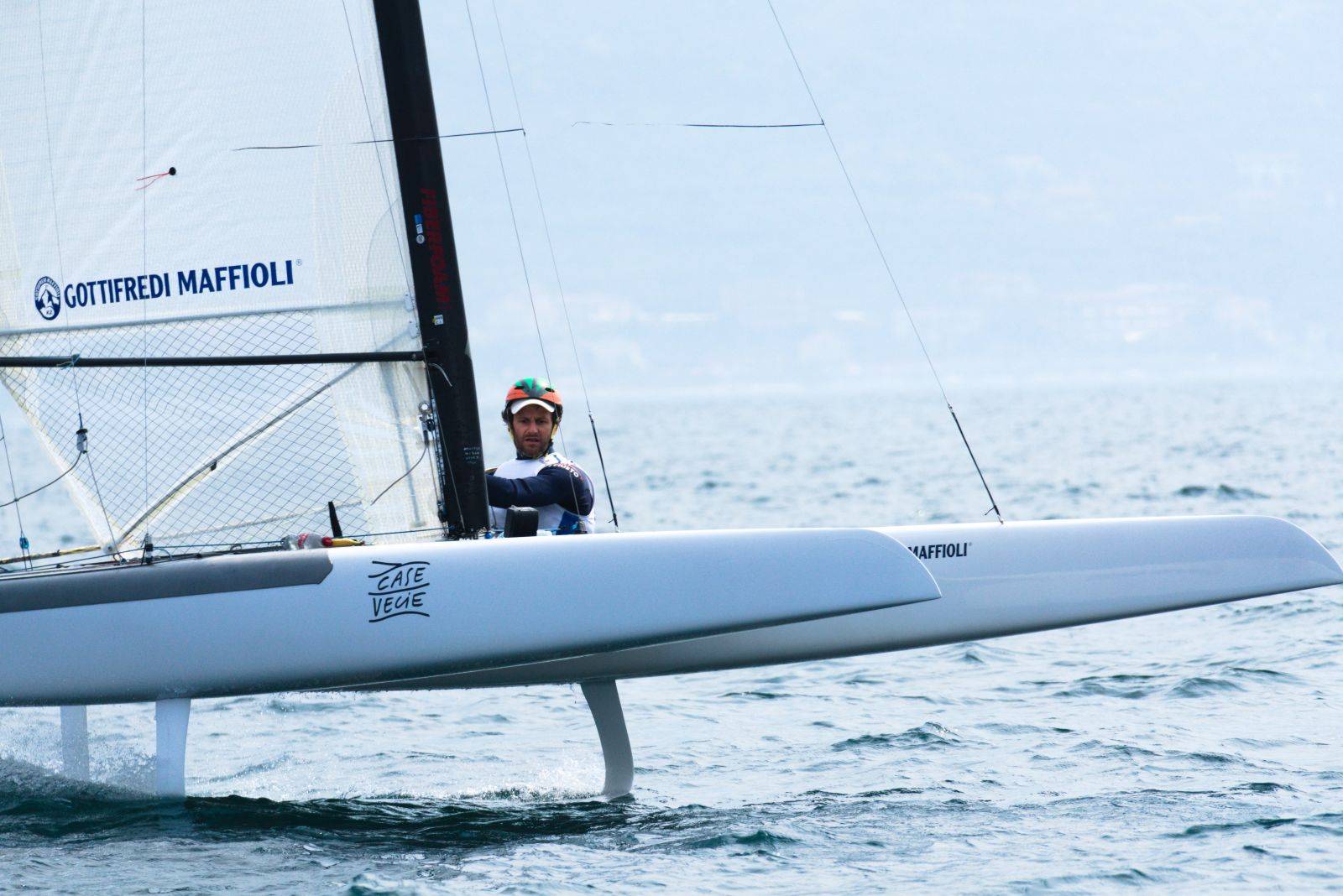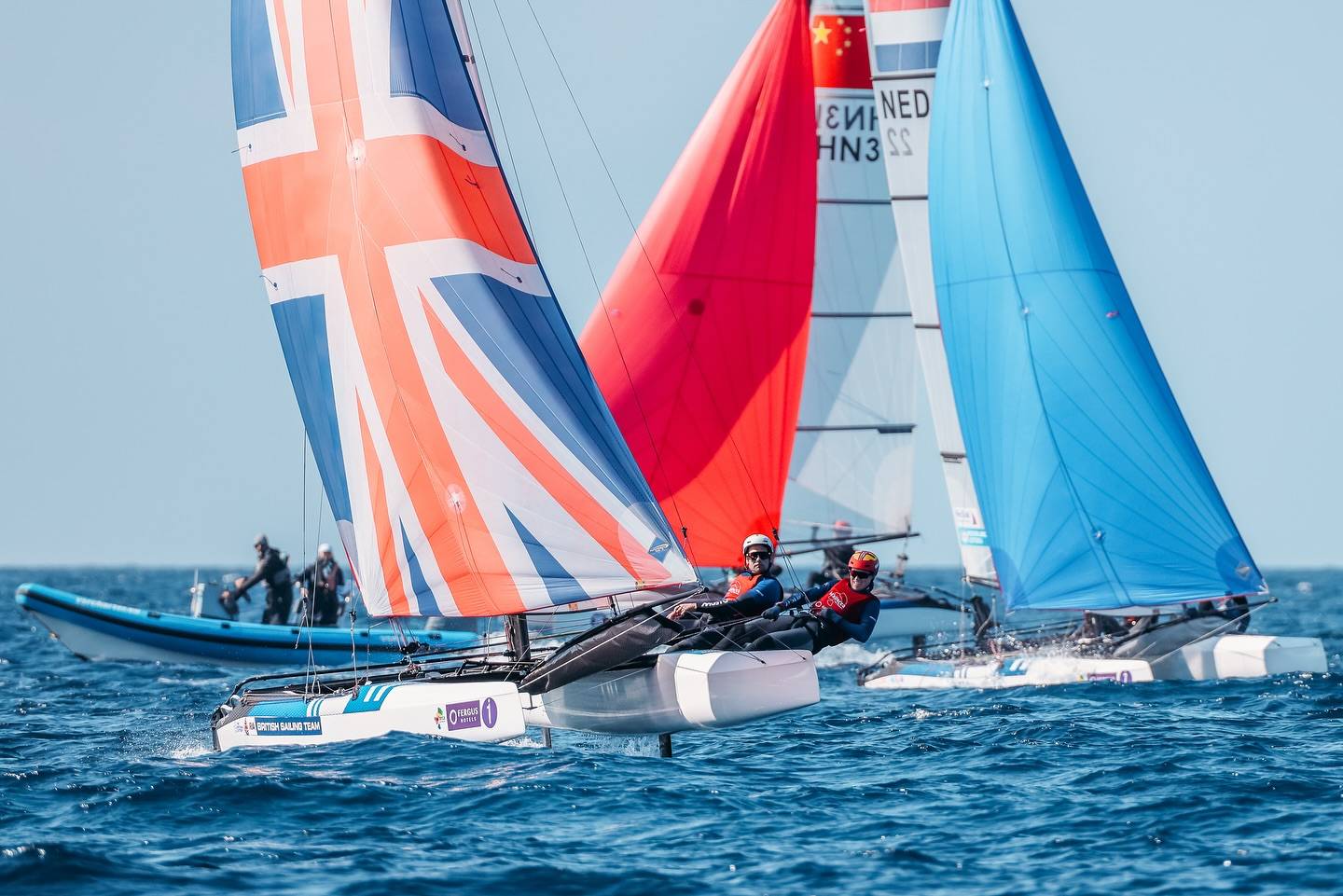A-Class: Mike Drummond on Rules & Devel
Continuing with the series of qualified builder/designers positions Mike Drummond sent his personal view on current scenario. On the C boards continuous radius proposal I must point out that Raphael Censier went airborne / jumping /flying or whatever you want to call it without J boards and even winglets in his first tries.
Only way to ban foiling now in the A-Class is to return to short straight boards, this is an indisputable fact.
————-
Mike Drumond’s view.-
Rule 8a Development
I was a member of the Technical Committee which drafted the 1.5m tip-to-tip rule 8.1 in 2009. For better debate on any future rule changes, it is instructive to review the reasons for this rule and why boats are now foiling.
Timeline of foil development
In about 2000 the class voted not to allow foiling and a new rule was introduced “No hydrofoils permitted”.
2004. The class started using canted straight boards which produce vertical lift. They became normal and if “no hydrofoils” was interpreted as “no vertical lift” 90% of the fleet would be illegal.
2008. The Technical Committee was asked to propose a rule to replace “no hydrofoils”, but with several constraints – to allow existing boats that already produced lift; be open enough to allow development; be easily measured; as well as not allow foiling.
The first problem is that a boat can fly with straight, vertical board – albeit briefly, without control and not especially fast. A racing rule such as “at least one hull must be in contact with the water” relies on protests during racing for enforcement and is outside the scope of the TC.
Because the TC could not write a measurement rule to completely keep a hull in the water, the only possibility was to restrict foils so they would not be competitive during racing. The reasoning was that if a foil system wasn’t competitive, then the fleet didn’t have to adopt it. Hence the 1.5m tip to tip rule.
Why did rule 8.1 fail to prevent foiling?
The simple answer is we are a lot faster now than in 2008 due to developments in every area: sails, masts, techniques, hulls, appendages
– Hull shapes have lower drag in the 12-15kn boat speed range
– Soft masts allowed powerful sails downwind
– C-curved boards were introduced
– Longer top battens
– Using the windward board downwind increased the vertical lift
– Hiking and trapezing downwind compensate for the righting moment loss from the windward board
– Rudder elevators allow more stable flight
– J-curved boards with controllable angle
With hindsight, the only reasonable rule to prevent foiling is to only allow straight vertical boards.
SPIRIT vs LETTER of the rules
The problem in interpreting the spirit of the rules is they mean different things to different people. This is distorted further when multiple languages are involved, and common interpretations can change over time.
Once a rule is written, it can only be interpreted by using the meaning of the words.
FUTURE RULES
Because the A-class has open rules, any significant change to one piece of equipment will lead to significant changes in other areas and new rules will be disruptive.
What if Rule 8.1 (1.5m) was removed and we are fully foiling most of the time?
– Hull shapes will become light wind oriented
– Crew weight will increase because speed will be limited by righting moment
– Upwind foiling?
Maybe with 2 boards in the water for lift, or windward board raised at neutral pitch, or windward board raised providing RM . It will take a while to work through these options because they will be coupled with crew weight and sail shapes, I think.
– Rudder and foil will increase in span to allow greater flight variation; therefore more carbon. (This may happen anyway, but I think it is certain with full foiling)
– Higher boat speeds – sails will become flatter
– Flat sails – masts will become stiffer
Even if this is not exactly right, my point is that the history of Rule 8.1 shows that our present knowledge isn’t enough to know how the class will develop.
Any new rules will have wider consequences that may be unforeseen and unintended. Eg it has been suggested that removing rule 8 will reduce costs; this might be true for cases and foils, but it will lead to much greater costs in other areas to remain competitive.
These opinions are mine alone, not the Technical Committee.
MD
———-Ends———-

























I just heard that my great sailing friend and former CEO of Hobiecat Europe has passed. May The endless oceans…
...Report was sent by an F18 Sailor, if you want Hobies reported send your own, we'll publish as usual. Cheers.
Looks like in your report the Hobies are not really present. Suggest to rewrite the article.
Thanks for the great report Wik. Great battle.
If I correctly read the results the overall winner this year is a Hobie16